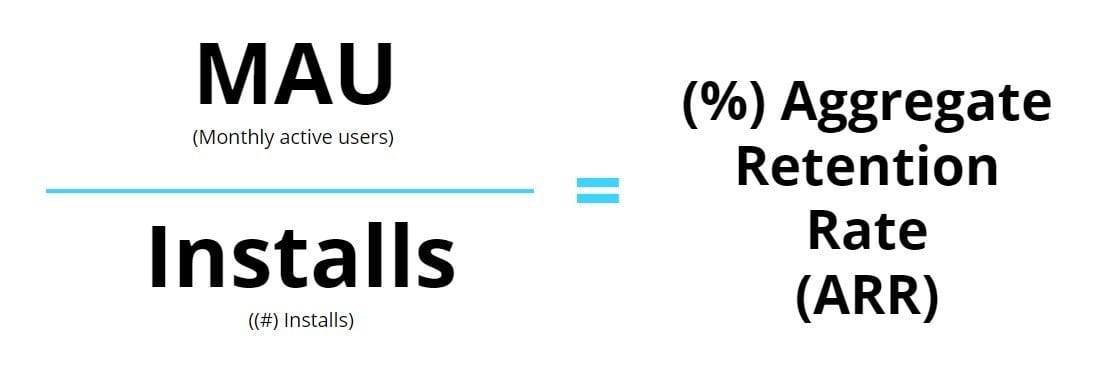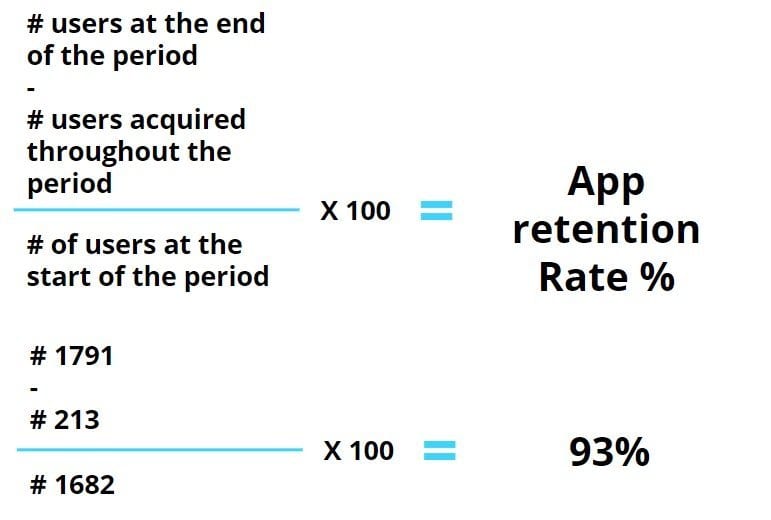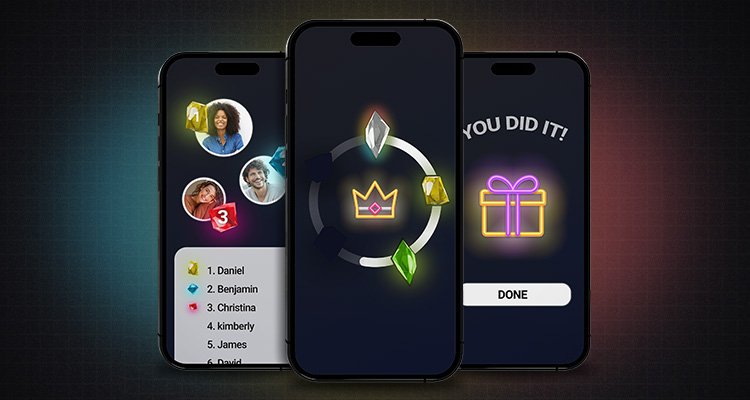4 Simple Strategies to Improve Your App Retention Rate

With nearly 9 million mobile apps flooding the market, and the vast majority being available for free—it’s no surprise that the app landscape is more crowded and competitive than ever. Every day, thousands of new apps make their way into the app stores, pushing retention rates lower and making it incredibly easy for users to find and switch to competing apps.
This is why it’s never been more important to start working on increasing your app’s retention rate.
Relying solely on driving high volumes of traffic and mobile mobile app installs each day is not enough if users abandon your app shortly thereafter. The key to longevity and profitability lies in an effective app retention strategy.
As mobile user acquisition costs continue to soar—now being five times more expensive than retaining an existing user—it becomes clear that boosting your app retention rate is not only beneficial but also more cost-effective in the long run.
In this article, we’ll delve deeper into why this is the case and explore 4 easy strategies that can help you maintain a robust user base.
What is Mobile User Retention?
Retention rate is a crucial metric in app store optimization (ASO). It measures the percentage of active users who continue to use your app over a given period.
You might be surprised to learn just how low these figures are: on average, only about a quarter of users return to an app more than ten times.
- So, what happens to the rest? It’s simple—They lose interest. These users contribute to what’s known as the “churn rate”—the percentage of users who leave the app within a specific period.
And if this isn’t enough, about a quarter of users abandon an app after just one use! This rapid churn means it’s crucial to not just attract users but also keep them engaged.
And how can this be done, you may ask? As is the key to making a lasting impression on someone you’re looking to impress, your app retention strategies must focus on capturing user interest from the very first interaction.
Enhancing user experience at the onset can significantly decrease churn rates and increase the likelihood of users becoming long-term customers.
Where Does the Real Value Lie in User Retention?
How important is app retention? Let’s begin by introducing a vital concept here: LTV, or lifetime value.
- LTV estimates how much revenue a specific customer will generate over their engagement with your app.
- It’s a crucial metric for shaping marketing budgets and running operations smoothly, starting with understanding your retention rate.
- Without a clear grasp of your retention statistics, accurately calculating LTV is nearly impossible, highlighting the invaluable role of retention data.
Moreover, since most users download an app and abandon it almost immediately, user retention is essentially the premier indicator of your app’s success.
- Delving into retention metrics reveals why a business might be leaking money—if users are rapidly churning due to issues like bugs or lackluster content, profitability will inevitably suffer.
- Conversely, a high retention rate boosts the likelihood of users evolving into paying customers, which translates to robust ROI.
It’s important to acknowledge that retention strategies are not one-size-fits-all.
For instance, a flight booking app might show a low retention rate as users tend to uninstall the app post-travel—this isn’t necessarily problematic.
However, for a B2B app tied to monthly payments, a higher retention rate is expected and beneficial for measuring performance.
Apps reliant on frequent user interaction and monetization, such as the ridesharing giant Uber or the popular meditation app Calm, find retention absolutely critical. Active users are key revenue drivers. And isn’t revenue the ultimate goal?
- Considering this, app retention strategies not only cost less than ones targeting user acquisition—but also potentially drive higher returns, allowing you to allocate budget elsewhere and accelerate app growth.

Furthermore, if tracking your retention leads to better LTV calculations, and knowing your LTV helps in funneling your budget towards acquiring more valuable users, then enhancing your app retention can also amplify your user acquisition efforts.
Remember, the same users who are satisfied with your product are likely to recommend it. Word of mouth remains the most cost-effective and powerful way to attract high-value customers.
Looking to boost your app retention rate?
We’ve helped dozens of app owners improve their apps’ performance and we can do the same for you!
How to Calculate App Retention Rate
There are several methods to calculate the app retention rate, each with its specific use case and benefits depending on the type of analysis you wish to conduct.
Aggregate Retention Rate (ARR)
This method calculates the retention by dividing the number of Monthly Active Users (MAU) by the total number of installs within the same period.
- Though simple, it’s less commonly used due to its broader approach, which might not provide detailed insights for specific user behaviors or cohort analyses.

Classic Retention
Also known as Day N retention, this method tracks the percentage of new users who return on a specific day after their initial app use. For instance, if you had 1,000 new users on day one and 750 returned the next day, your Day 1 retention rate would be 75%. This method offers daily granularity and is straightforward to calculate, making it ideal for assessing the immediate impact of user acquisition campaigns or specific daily activities.
Return Retention
Focused on the number of users who are still active at the end of a given period, excluding any new users acquired during that period—Return Retention essentially measures the retention of users who were already part of the app at the start of the tracking period, providing insights into the retention of a more stable, possibly long-term user base.
It’s highly flexible and can be useful for understanding overall user engagement across any segment of time.
You can calculate it using the following formula:
(# users at the end of the period – # users acquired throughout the period) / (# of users at the start of the period) * 100 = App Retention Rate

Each of these methods has its place in a robust analytical strategy, allowing you to tailor your retention tracking to fit the specific needs and goals of your app. For day-to-day insights, Classic Retention might be your go-to, while ARR or Return Retention can offer more comprehensive views over longer periods, which is beneficial for long-term strategic planning.
How to Increase App Retention Rate?
Now that we’ve explored what app retention is and how it can be calculated, let’s dive into the crucial matter for your business—how to increase your app’s retention rate.
The holy grail of a great mobile marketing strategy isn’t just to engage users but to make them so attached to your product that they can’t stand to leave. Leveraging behavioral psychology alongside our tried-and-true marketing tactics, here are four top strategies we’ve honed and proven effective through our case studies:
1. Refine the App Onboarding Experience
The journey starts the moment a user downloads your app, making those first impressions critical. Streamlining the app onboarding process to quickly demonstrate your app’s value is key.
- By minimizing initial setup steps and clearly highlighting benefits early on, you can significantly reduce the likelihood of early user drop-off. A well-crafted onboarding sequence can dramatically boost long-term user retention.
Start by asking yourself “What are the best ways to keep the onboarding process simple and intuitive to reduce any potential friction?”
- Make sure to reduce the number of steps to bring users closer to conversion without overwhelming them (e.g. by asking too many questions).
- Highlight the benefits of your app and what users can achieve by using it in the long run.
- Choose the most optimized way to display the onboarding content. This can be in the form of a list, map or grid view; whichever is more intuitive will work best.
- Allow users to sign up to your app using their social media, Google or Apple accounts to keep the process as quick and hassle free as possible.
2. Introduce Gamification Elements
Incorporating gamification into your app can significantly increase user engagement and retention. By adding elements like points, levels, challenges, and leaderboards, you turn the user experience into a more dynamic and rewarding one while building an immersive experience that will keep them coming back.

This strategy taps into the user’s intrinsic motivation to achieve and compete, which can lead to more frequent and prolonged app usage. Some strategies you can use to incorporate gamification elements into your app are reward systems (badges, virtual currency, etc.) and leaderboards—which are effective for fostering competition and motivation.
Think about it this way: If you let users know that their friends and family seem to be doing much better than they are, they’ll go to extreme lengths in order to maintain their hard-earned positions in the game.
- Create an even better app by adding the option to share victories on social media and compete head-to-head with others, preferably people that the user actually knows. You’ll be surprised to find out just how invested competitive users get.
This strategy will turn your app from a fun little hobby to a personal goal that goes far beyond the mobile world.
3. Smart Use of Push Notifications
Push notifications are a powerful tool for keeping your app top of mind. The key is to use them strategically to deliver timely and relevant content that adds value, not noise, to the user’s day.
For example, notifying users about a new feature that suits their interests or reminding them of content they’ve shown an affinity for can re-engage them at just the right time.
Remember—Being aware of deals before everyone else may be awesome, but it might still not be good enough for your users to want to engage. Instead, offer users deals that are only available through mobile purchases to incentivize them to check-in regularly.
Our targeted push notification strategies have proven to triple engagement rates for our clients without increasing user churn.
4. Personalized User Experiences
Tailoring the user experience to individual preferences and behaviors can drastically enhance retention. This means utilizing data analytics to offer personalized recommendations, adaptive interfaces, and interactive elements that resonate with the user’s own usage patterns.
- Personalization not only makes the user feel understood but also deeply integrates the app into their daily routines, making it indispensable.
You can also look to your app’s ratings and reviews to learn about user feedback and personalize it accordingly.
- Maybe many users are saying your fitness app lacks a motivational element to keep them going on their journey, so why not incorporate a daily motivational quote based on their progress that will be sent as a push notification at the start of each day?
- This way, you’re keeping your app top-of-mind and personalizing your users’ experience all at once.
Looking to boost your app retention rate?
We’ve helped dozens of app owners improve their apps’ performance and we can do the same for you!
Key Takeaways
Crafting an app retention strategy isn’t just about numbers; it’s about creating experiences that captivate and retain users amidst the endless sea of options.
As we’ve explored, the journey from download to loyal user hinges on those crucial first interactions, the thrill of competition, the allure of personalized engagement, and the gentle nudge of timely reminders. It’s about understanding not just what users do, but why they do it, and weaving those insights into every pixel and notification.
Ready to transform your app’s retention game? As a specialized app marketing agency, we pride ourselves on optimizing all levels of the app marketing funnel. Retention is just one of the elements our team of experts can help you with.
Contact us today and let’s craft experiences that users will love—and stick with.
FAQs
Mobile app retention rate is one of the most important ASO factors to consider. It’s the percentage of active users (people who use your app continuously) over a given period of time. Generally, the industry definition is the percentage of an app’s users who return to the app within three months of its initial download.
The app retention benchmark is around 30-35% at the three-month mark, but of course, a good retention rate for an app varies widely according to the app category.
You need to get users wanting to come back. Here are some ways we’ve covered on how to do so: Optimize your app’s onboarding process, utilize gamification elements, and personalize the user experience.






